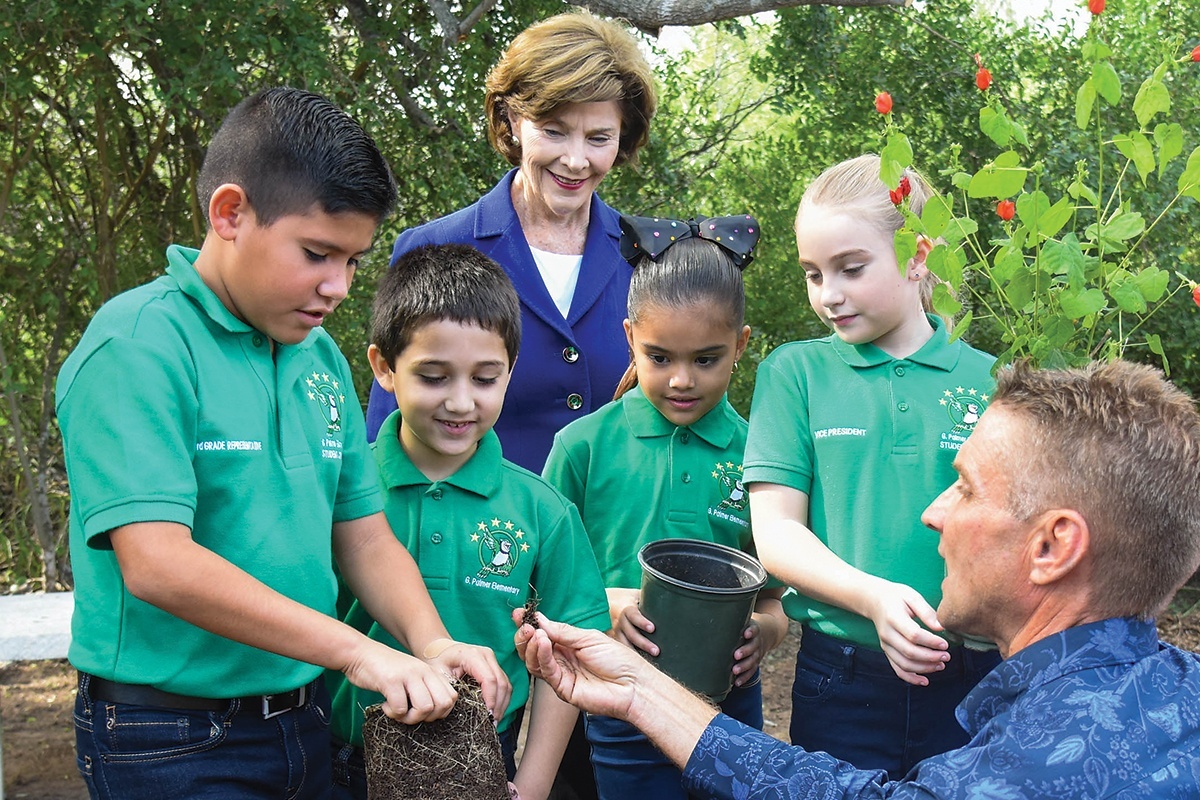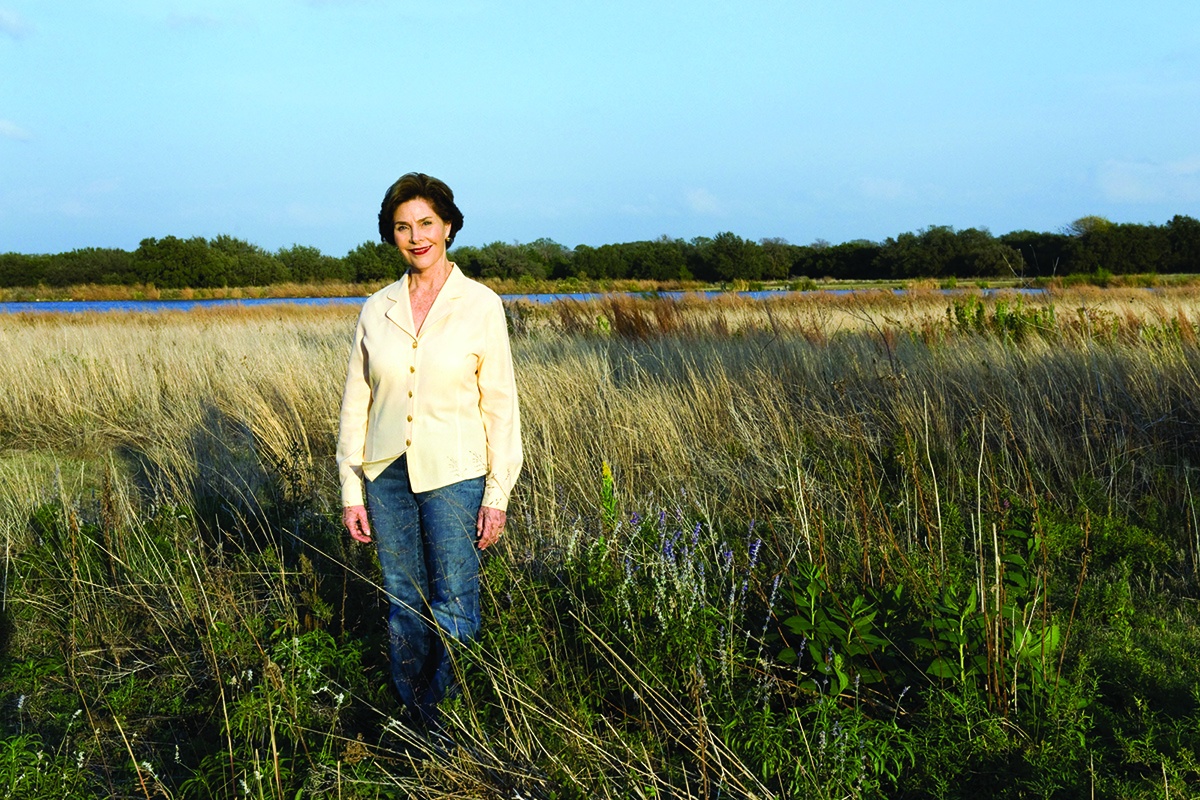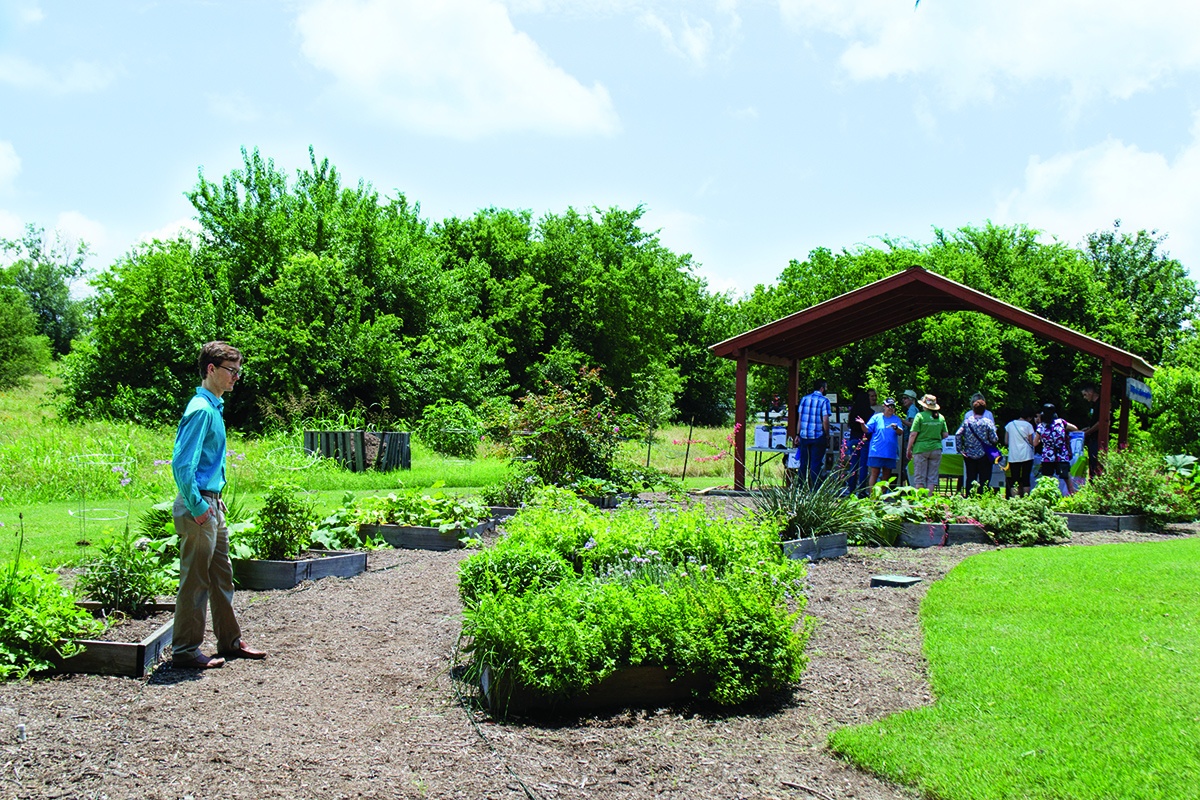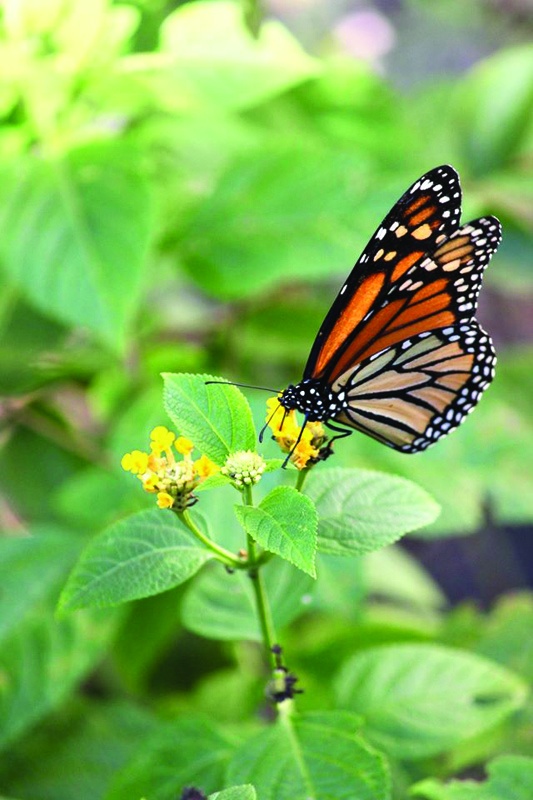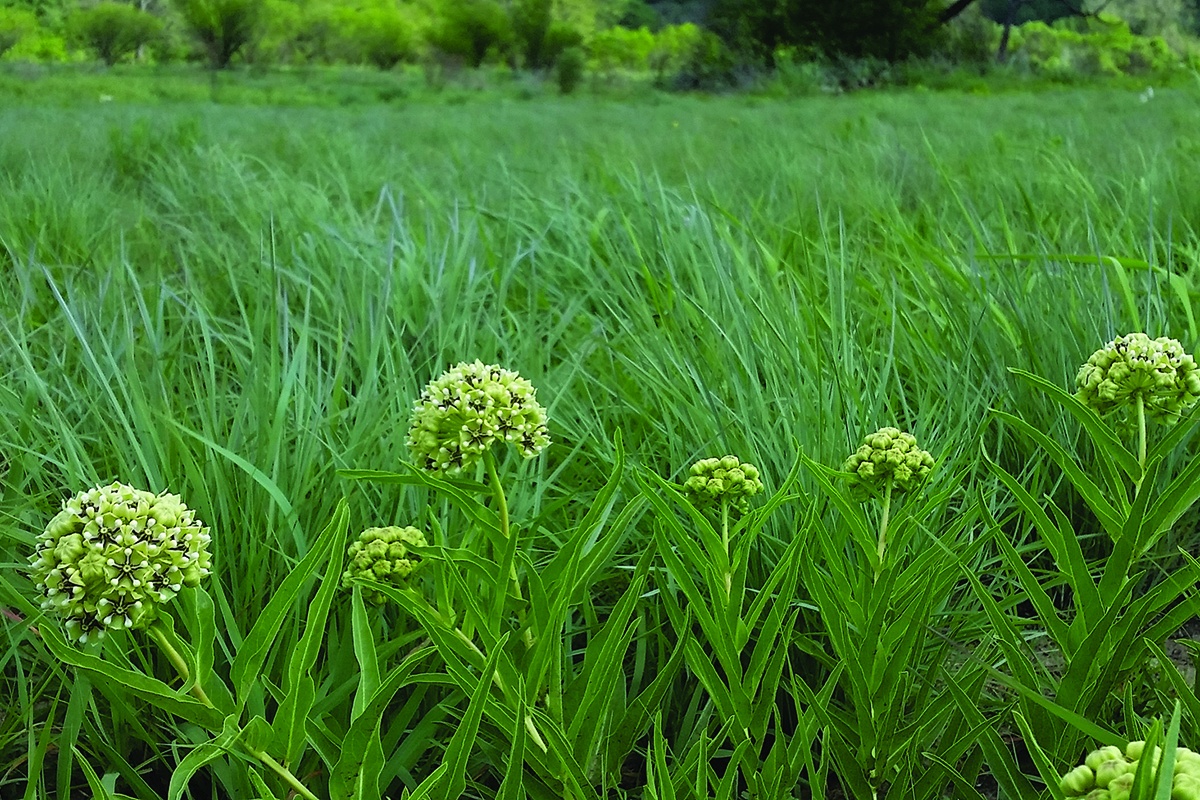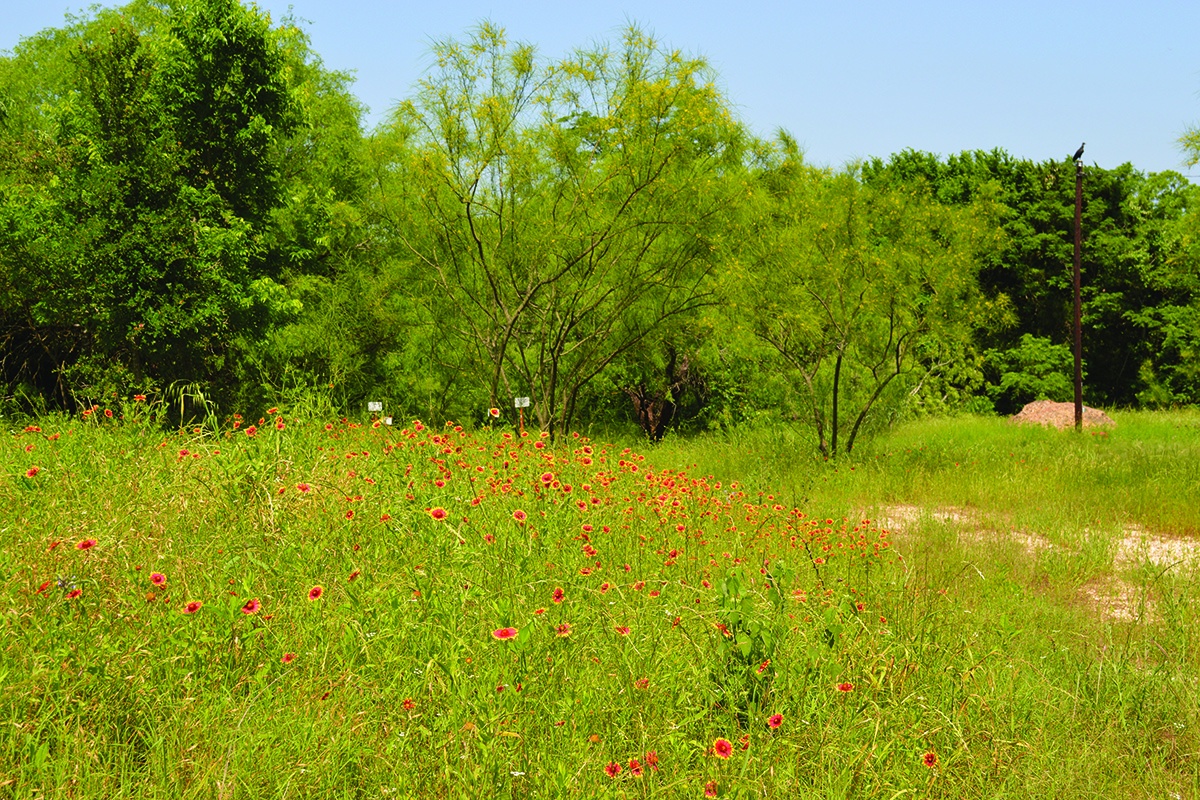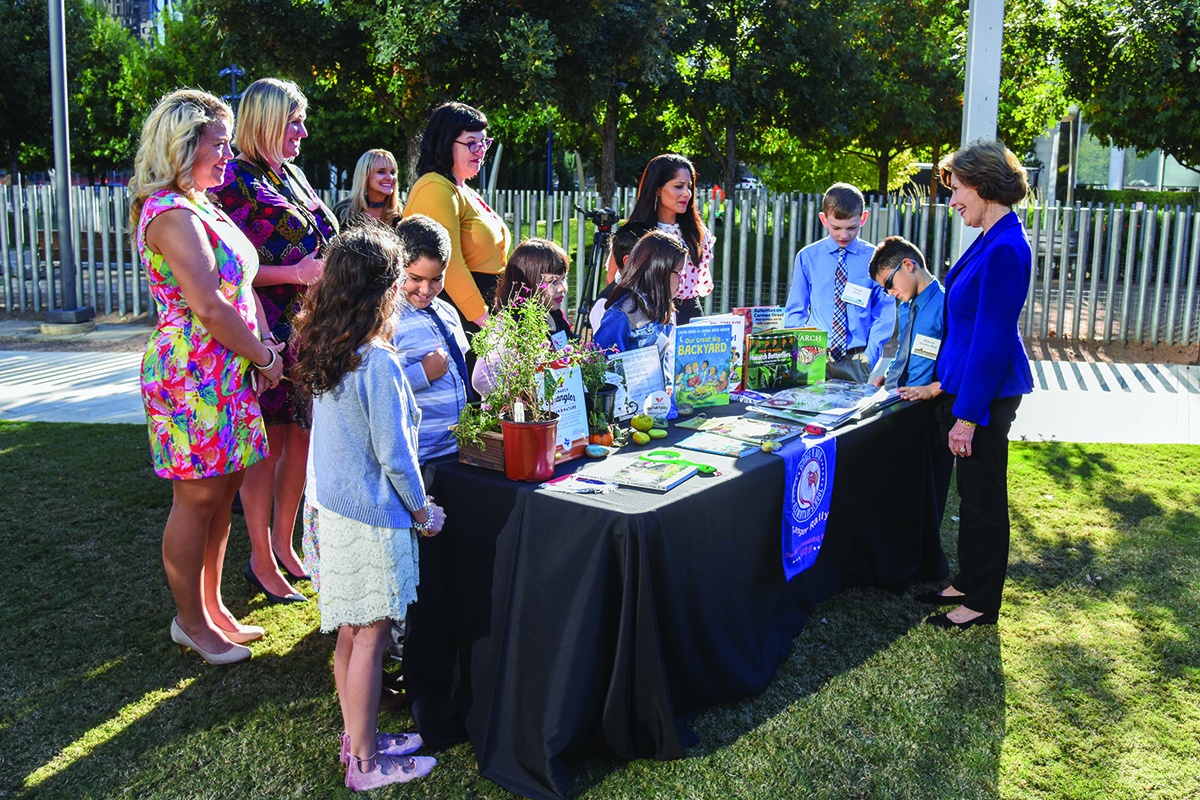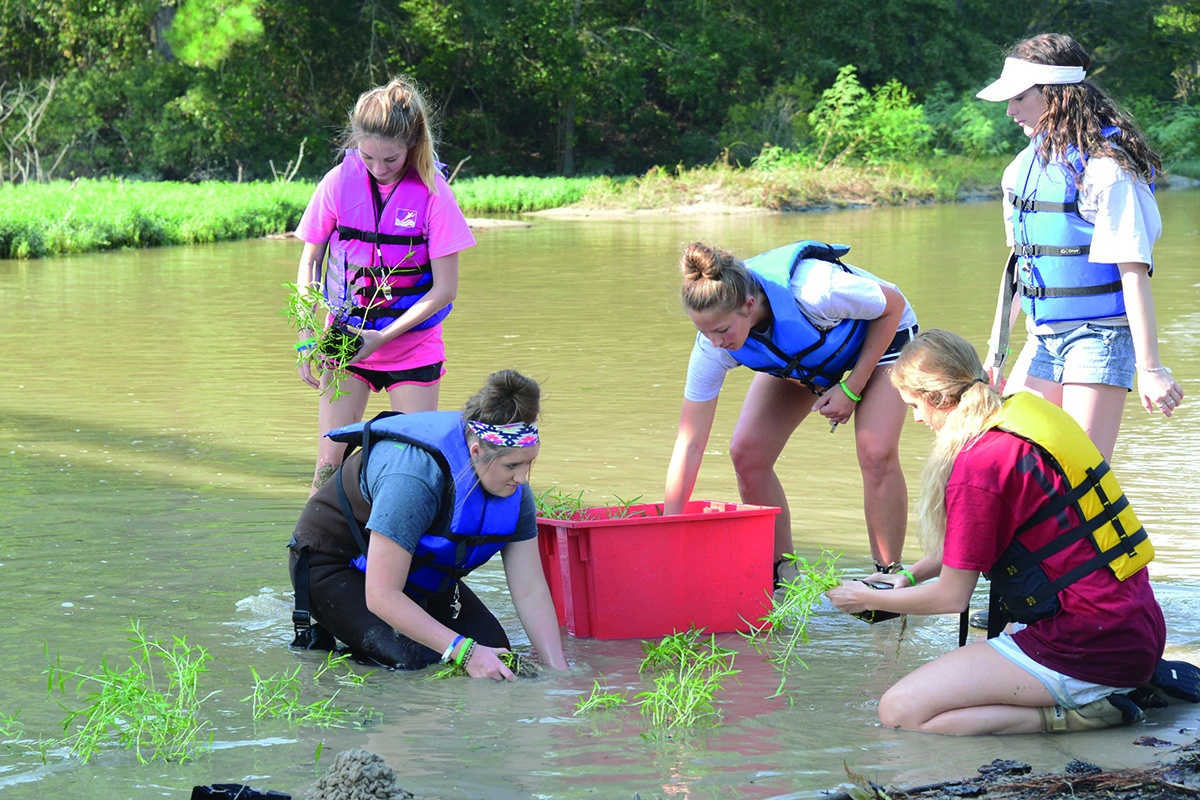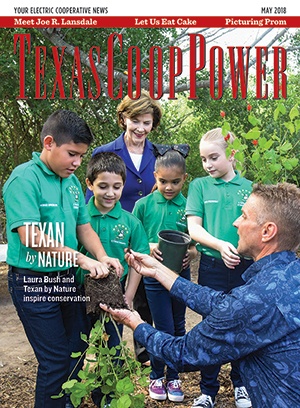When Sue Stutzman added native plants on part of her 2 acres in Magnolia in 2016, she immediately began seeing more butterflies. Early on, she counted 35 species, then a few months later, 53.
Stutzman is an official member of the Monarch Wrangler program, launched to encourage people to create habitat for the iconic butterfly, whose numbers have dropped as much as 90 percent in the past 20 years mainly due to loss of habitat. Much of Texas lies on the route that millions of the butterflies follow on their spring and fall migrations.
The program comes from Texan by Nature, an organization founded in 2011 by former Texas and U.S. first lady Laura Bush, Katharine Armstrong and Regan Gammon. The three friends share a mutual interest in the natural resources of Texas and some serious conservation chops: Bush served as honorary chair of the National Park Foundation; Armstrong previously chaired the Texas Parks and Wildlife Commission; and Gammon had been on advisory boards for the National Park Foundation and the Lady Bird Johnson Wildflower Center.
Right away, the women decided not to reinvent the wheel but to find successful conservation work and encourage more of the same. The organization’s official mission became “to spur Texan-led conservation that produces tangible benefits for people, prosperity and natural resources.” Or, as Bush says, “to keep Texas, Texas, for the benefit of Texans and wildlife.”
In one of its first projects, Texan by Nature partnered with Goldthwaite, a Central Texas city, to create the Texas Botanical Gardens, a native landscape and education program.
The organization hosted a symposium on nature and human health at the Houston Methodist Research Institute and one on monarch butterflies at Austin’s Lady Bird Johnson Wildflower Center. That event drew more than 80 organizations.
“Part of the purpose of the monarch symposium was bringing all those groups together,” says Joni Carswell, Texan by Nature executive director. At the event, 15 partners agreed to conduct research, create habitat and offer educational workshops. Texan by Nature decided to focus on education, including encouraging landowners to plant native milkweed. Monarchs lay their eggs solely on this plant, so it is critical to their survival—as is the survival of other native plants that provide food for adult butterflies.
To further encourage monarch habitat across the state, Texan by Nature then created the Monarch Wrangler program, which has evolved into the Texan by Nature Certification program. Landowners like Stutzman as well as civic organizations and corporations can apply for the certification.
Monarchs particularly appeal to Bush, Armstrong says, because the butterflies need prairie habitat. “Laura did extensive work developing a native prairie on the Central Texas ranch she and George [former President Bush] own. She’s not just talking about this stuff, she’s actually done it. She is an example of the kind of things she wants other people to do, what Texan by Nature is charged to do.”
While the program focuses on a single species, improving habitat for monarchs benefits many other species as well. Quail, for example, prefer the same habitat.
To date, Monarch Wranglers representing 65 residences, 14 landowners and 16 civic organizations have established more than 850 acres of new monarch habitat.
“The idea of acres and acres can discourage some people, but a dedicated plot with nectar flowers doesn’t have to be huge to attract an amazing number of butterflies,” Stutzman says. “Overall, trees, shrubs and grasses provide shelter and can be larval host plants.” Natives, she adds, don’t require a lot of maintenance.
Corporate Monarch Wranglers include Dell and BAE Systems, representing a combined 124 acres. Stephen Ford, program director at BAE’s Austin Business Center, notes that changes inspired by the program on that campus led to long-term savings on mowing, fertilizing and watering.
Dell removed invasive species, planted milkweed and native plant plots, and reduced mowing on its 38-acre Round Rock campus. The company’s efforts also include an employee engagement program and interpretive signage that informs employees and visitors about conservation of native habitat. Physical changes to a landscape that benefit butterflies also improve the quality of work life for employees. “When companies involve employees in their outdoor workplace environment and educate them about conservation, they can apply these ethics to their life, for example by practicing conservation at home,” Carswell says. “Research shows that it all ties back to the benefits nature has on both physical and mental health.”
Another Texan by Nature initiative, Conservation Wrangler, goes beyond monarchs, recognizing conservation projects of all types, so long as they provide tangible returns, reach new and diverse audiences, and are science-based with measurable conservation outcomes.
According to Carswell, the organization recently decided to focus mainly on this program. “Monarchs are beautiful and we all identify them with freedom and nature itself,” she says. “But Conservation Wrangler is more general and has a broader reach. It highlights all the best conservation initiatives in Texas that are true to our mission and make an impact on our natural resources and economy.”
Taylor Keys, conservation associate for Texan by Nature, points out that the Conservation Wrangler program also reaches people in areas of Texas not on the monarch’s migration pathway.
Current Conservation Wranglers include the Texas Botanical Gardens in Goldthwaite and Bracken Cave near San Antonio, home to the largest bat colony in the world. Texan by Nature helped generate support for the private purchase of 1,500 acres adjoining the cave that were slated for a major residential development.
For another Conservation Wrangler project, students at York Junior High School in Spring use GPS technology to help track the state bison herd in Caprock Canyons State Park, some 500 miles away. That partnership teaches students skills such as fundraising, research and use of technology; saves the park much-needed funds while increasing public awareness of the herd; and improves management of park habitat for the bison.
Lake Livingston Friends of Reservoirs, which recently became a Conservation Wrangler, works to restore and protect natural habitat in and around the 85,000-acre lake. A multigenerational group of volunteers, including high school students and inmate horticulturists from the Texas Department of Criminal Justice’s Ellis Unit in Huntsville, has planted more than 10,000 American water-willows at 18 sites.
Another Conservation Wrangler, the Lower Rio Grande Valley Learning Landscapes Collaborative, plans to incorporate native gardens throughout school districts in the area. Five school districts in the Valley already have committed to planting native butterfly gardens on their campuses, creating the potential for more than 150 gardens and 7,550 native plants. The wildlife these attract will benefit local ecosystems, and the gardens also will be used to promote outdoor education.
Electric cooperatives can participate easily, Carswell says, by using native plant species and water conservation practices in landscaping at offices and other facilities. The organization provides step-by-step instructions for corporate entities to become recognized as Texan by Nature businesses.
“Many of these projects need additional partnership, funding and volunteers,” Carswell says, “and Texan by Nature works to pair interested businesses with vetted, science-based projects.”
Texan by Nature supports its Wranglers with 12–18 months of tailored support, connecting participants with industry expertise and sharing their efforts through blogging, social media, and newspaper and magazine articles.
“Electric utilities, including co-ops, have done a lot,” says Armstrong. “We want to encourage them to keep doing it and to do more. You can always do more.
“If you’re a Conservation Wrangler, you are among the best stewards in Texas,” she adds. “The business community in Texas wants to do the right thing but for various reasons is sometimes tentative. One focus of the organization has been to help them see what they can do. Laura is a positive force for good and viewed as an honest broker. She brings out the best in people.”
For Texan by Nature, it all goes back to a love for the special nature of Texas. “Our lives are enriched by the land beyond our back doors,” Bush said in a presentation about the monarch conservation plan, “and each of us has a stake in its future.”
As she documents butterfly species fluttering across her yard, Stutzman couldn’t agree more.
See more of Melissa Gaskill’s work at melissagaskill.blogspot.com.
Correction: April 30, 2018
The story incorrectly stated that Texan By Nature created the Monarch Wrangler program in partnership with the U.S. Fish and Wildlife Service, the Texas Parks and Wildlife Department and the National Wildlife Federation. Texan By Nature did not create the Monarch Wrangler program as part of a partnership.
